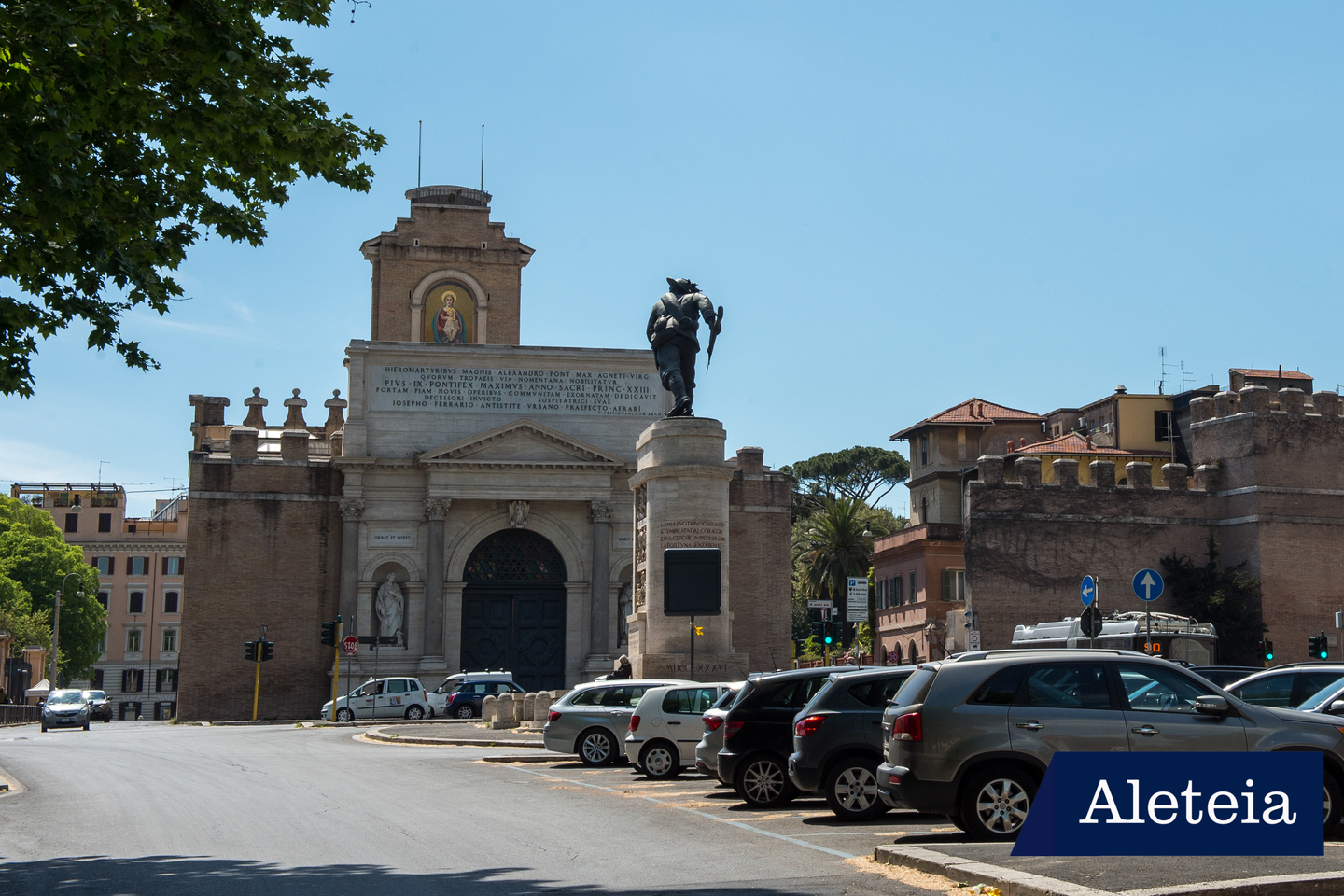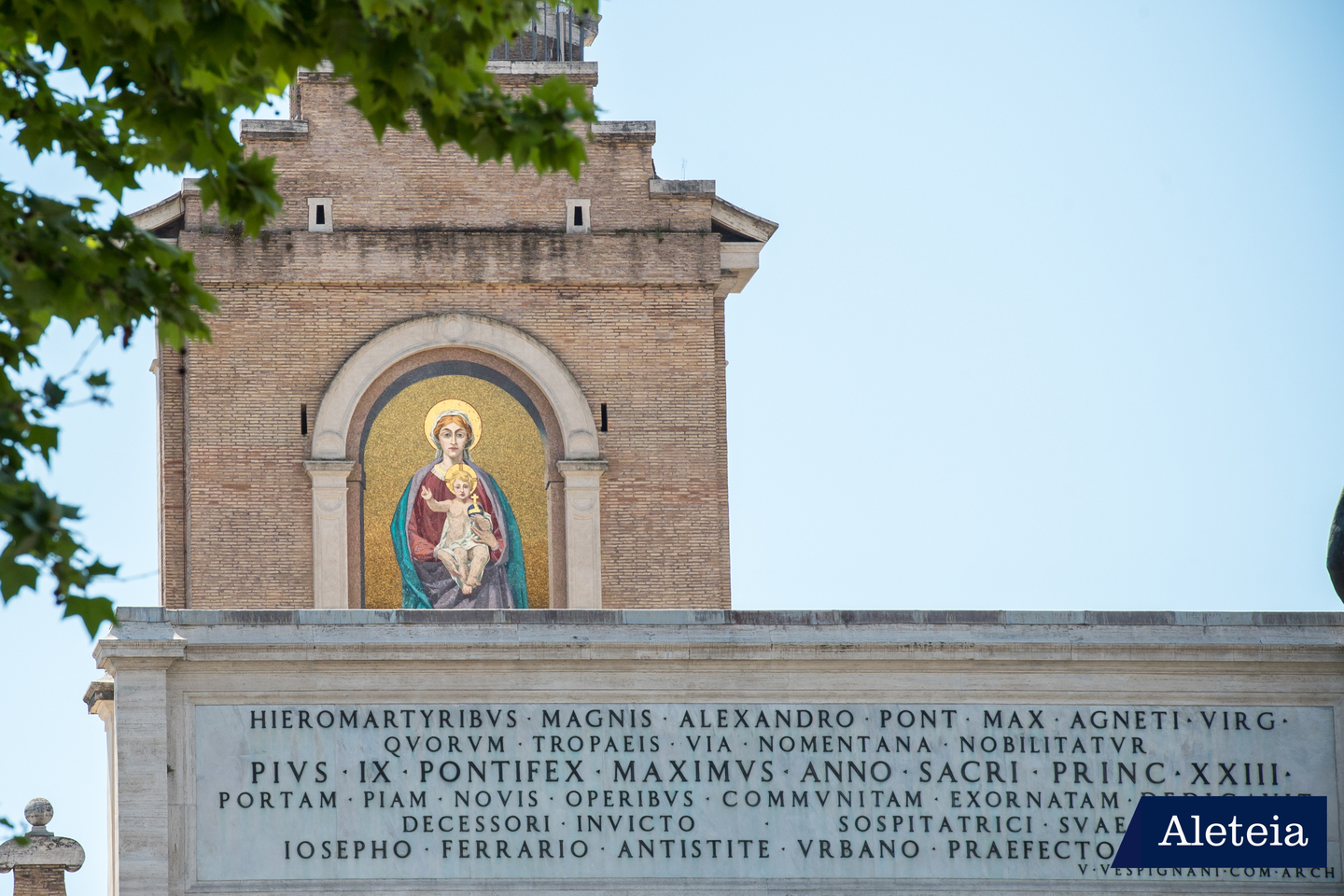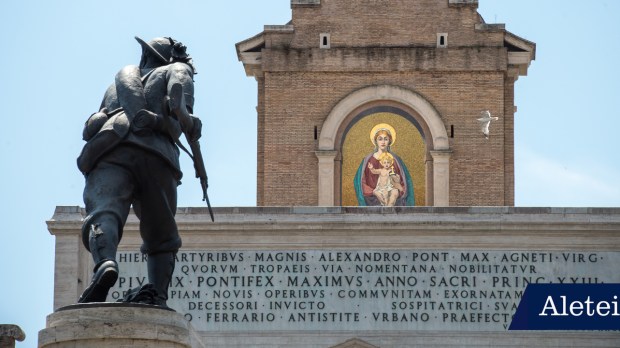We continue with our daily tour this month through a particular artistic expression of Marian devotion: Rome’s “Madonnelle” (“little Madonnas”). These are images of Mary—some of them miraculous—scattered throughout the streets and alleyways of the city. They are the object of much popular devotion. Follow the series here: Little Madonnas of Rome
The Madonna over the Breach: Madonna di Porta Pia, Porta Pia

It seems almost like an altarpiece, raised up there on high, above Porta Pia. Its height of 6.5 meters (21 ft) and width of 3.3 meters (11 ft) surely make it the biggest “little Madonna” in Rome. It’s an imposing image, not just because of its dimensions, but also because of the air of royalty that surrounds it.
The Madonna is on her feet, in a monumental pose, wrapped in a scarlet tunic and clothed in a blue mantle, looking straight ahead toward those who arrive in the city from the Via Nomentana and Via Salaria. She holds the Child in her arms; he is giving a blessing with one hand, and holding a globe in the other. The background is gold, and the whole image is placed in a solemn Neoclassical frame.

The work as we see it today is a polychrome mosaic made by the Vatican School of Mosaics in 1936. It reproduces and substitutes the original fresco by Silverio Capparoni (1862), commissioned by Pius IX on the occasion of the restoration of the ancient doorway. The fresco was mildly damaged during the conflicts of 1870 during which the Italian army conquered Rome; these have gone down in history as the “Breach of Porta Pia,” because near this door the army managed to breach the enemy lines. But more than projectiles fired during the conflict, it was the weather that ruined the painting, which, by the beginning of the 20th century, was almost totally faded.
It was only in 1936 that the Marian image reacquired, once and for all, its splendor. Thanks to a collection organized by the pastors of nearby churches, with the support of the Governorship, the restoration was able to proceed. The work was entrusted to the Vatican Mosaic School, which was charged with translating the grandiose image into a mosaic, thus assuring its lasting existence. For the design, drafts and sketches by the original painter were used.
To commemorate the restoration, a plaque was placed in Latin:
Haec Beatae Virginis imago/ Anno Salutis MDCCCLXII depicta/ temporis iniuris decolorata/ nitenti opere musivo renovata/ pulchrior urbi plaudenti apparuit/ Die VII Mensis Decembris Anno MCMXXXVI/ Studium Vaticanum Arti Musivae perfecit. (This image of the Blessed Virgin, painted in the year of our salvation 1862, discolored by the ravages of time, renewed by this shining work of mosaic, appeared in greater beauty to the applauding city on the 7th day of the month of December in the year 1936. This work was carried out by the Vatican Mosaic School.)
~
Follow the series here: Little Madonnas of Rome
See more articles like this at Aleteia’s Art & Travel section.

